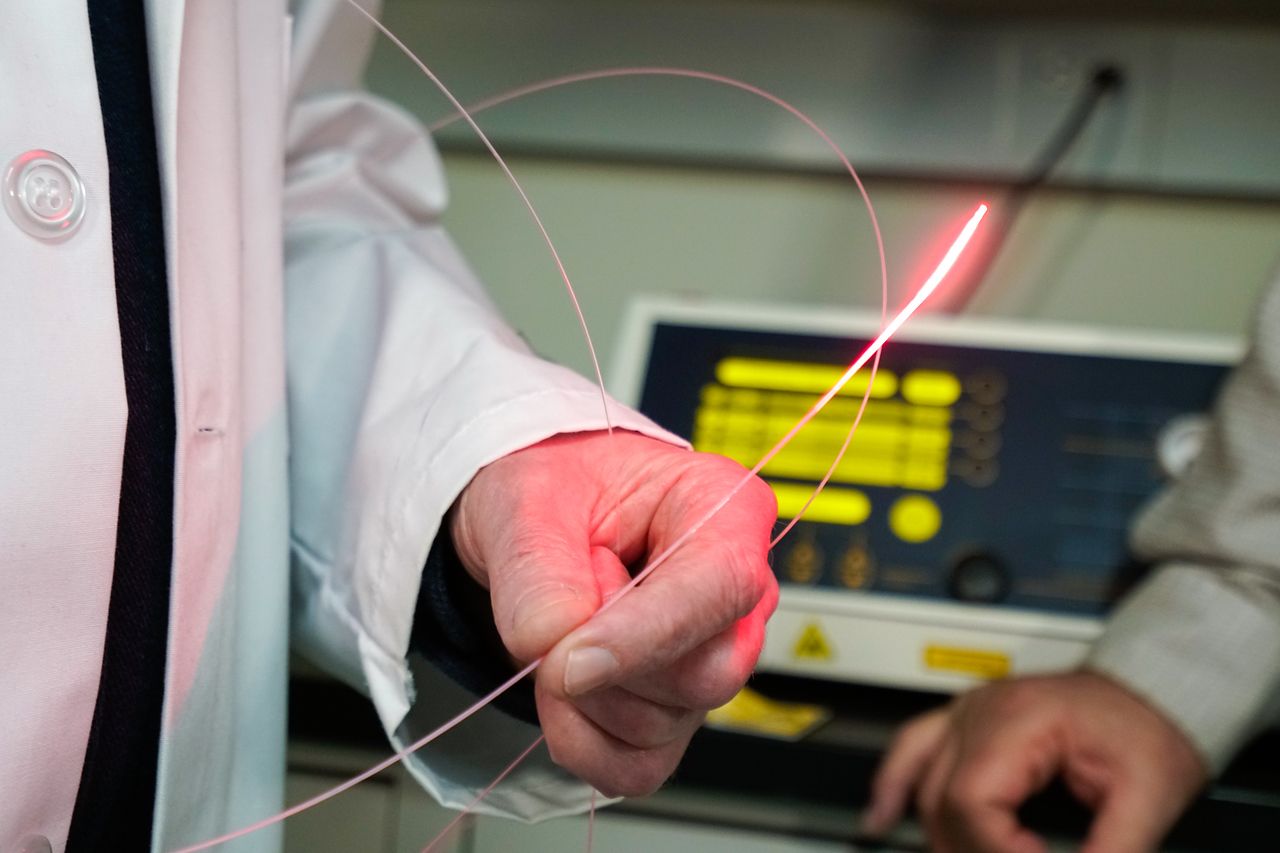Depending on your diagnosis, you may be eligible for treatment with photodynamic therapy (PDT). We offer PDT for specific types of head and neck cancer such as mouth, larynx and neck cancers, as well as severe dysplasia (abnormal cells, which may be precancerous).
Developed at Roswell Park and now used worldwide, this nontoxic treatment uses laser light to activate a light-sensitive compound (not chemotherapy). Treatment begins when you receive the compound intravenously (through an IV). The compound, called a photosensitizer, is absorbed by the cells in your body. After a few days, however, the compound is shed by healthy cells but stays inside the cancerous cells. Tumors are then exposed to light of a specific wavelength, delivered through very thin, flexible fiberoptic cables. The light goes through the tissue and activates the photosensitizer. Because the photosensitizer is inside the cancerous cells only, those cells are targeted for destruction, with little impact on healthy cells.
PDT has three effects:
- It kills cancer cells directly.
- It shuts down new blood vessels that are being created to feed the tumor. This helps cut off the tumor’s oxygen supply.
- It causes inflammation to help your body’s immune system kill the cancer cells.
The photosensitizer causes no side effects other than sensitivity to light. Depending on the type of photosensitizer you receive, for several weeks after treatment you will need to cover up, use sunscreen and stay out of direct sunlight.
PDT is FDA-approved for the treatment of esophageal cancer and non-small cell lung cancer. Since the treatment was developed here more than 40 years ago, Roswell Park has been a world leader in its refinement, conducting ongoing research supported by the National Institutes of Health. Patients with head and neck cancers travel to us from across the nation and around the world to enroll in clinical research studies of PDT.
